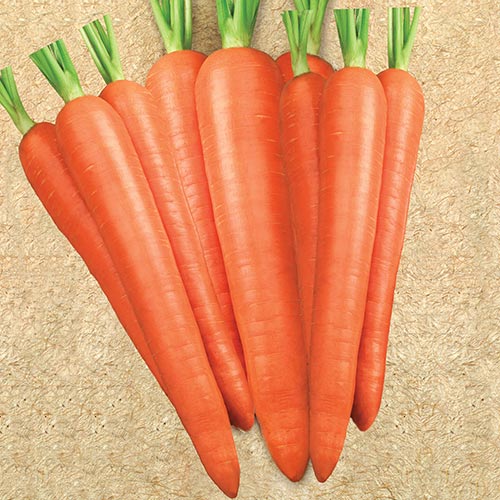
With as much as I love carrots– and the bags we eat of them every week- you’d think I’d have mastered growing them long ago, right? Wrong. Carrots stumped me year after year. One spring my kids found carrots on seed tape and we planted them at the completely wrong time. Luckily, though, I was able to turn my carrot fortunes around!
I have everything I need – sandy soil, free from rocks, with a neutral pH – seriously, that’s it. These are the only things you need to grow carrots. The rest comes down to timing, and since I tend to plant things and forget them, or plant things too early, I made this super-easy carrot countdown – and I’m sharing it with you guys, along with some of my best carrot-growing tips!
- Start your carrots 3 weeks before the last expected frost- then, on your calendar, mark down to plant your carrots again 2 to 3 weeks after that. Your last planting should go in the ground 3 months before the first fall frost- which doesn’t give you many plantings if you are in the northern growing zones.
- Either double till your soil or use a raised planting bed. Nice, loose soil is best. Some carrot varieties, can handle dense clay soil (these are the more squat, sturdy varieties instead of the long, slender carrots).
- Do your research on carrot varieties instead of randomly grabbing a packet. Besides needing to know the soil requirements of a variety, doing your research means that you can choose the carrot that is best for your garden. Go with a proven variety, like Gurney’s Choice Tendersweet. Tendersweet has great color that stays- even when cooking and freezing- and is nearly coreless, making it a great snacking carrot. Or choose something totally different, like Purple Haze. Purple skin surrounds a bright orange flesh, making this a fun variety for grown-up and kid-friendly gardens. The purple might boil away in water so if you love the color, roast your carrots instead.
- Make your life a little bit easier and invest in a Mini-Seedmaster to help with planting. Carrot seeds are itty-bitty, and I can not tell you how many times I have gotten frustrated and just started tossing handfuls of seeds around. Bad idea. Carrots thrive on order- nice tidy little rows, best for thinning and weeding.
- Thin, thin, thin. This is a crucial step I always forget about- so mark it on your calendar. Once plants are an inch tall, thin them out so they have about 1 to 3 inches between plants. Don’t pull them out- thin with a pair of scissors and minimize the risk of damaging nearby roots. Avoid crowding- crowded carrots produce crooked roots.
- Weed. A lot. One more thing to put on your calendar. Why weed? Weeds pull water- a lot of water- away from the roots of your other plants. And carrots? A root crop. They need that water that the weeds are slurping away.

Once your carrots are about a half inch in diameter and about 2 to 3 months old, they are ready to harvest. If you aren’t quite ready, leave them in the ground. Once you harvest them, twist or cut off the tops, scrub the carrots under cold water, and let them dry before sealing them in plastic bags and place them in your refrigerator. These steps are important- if you just harvest them and put them in the refrigerator, you will have limp, sad, wilty carrots in a few hours.
What varieties of carrots are you planting- or which varieties have you had success with? We’d love to hear your carrot commentary!

